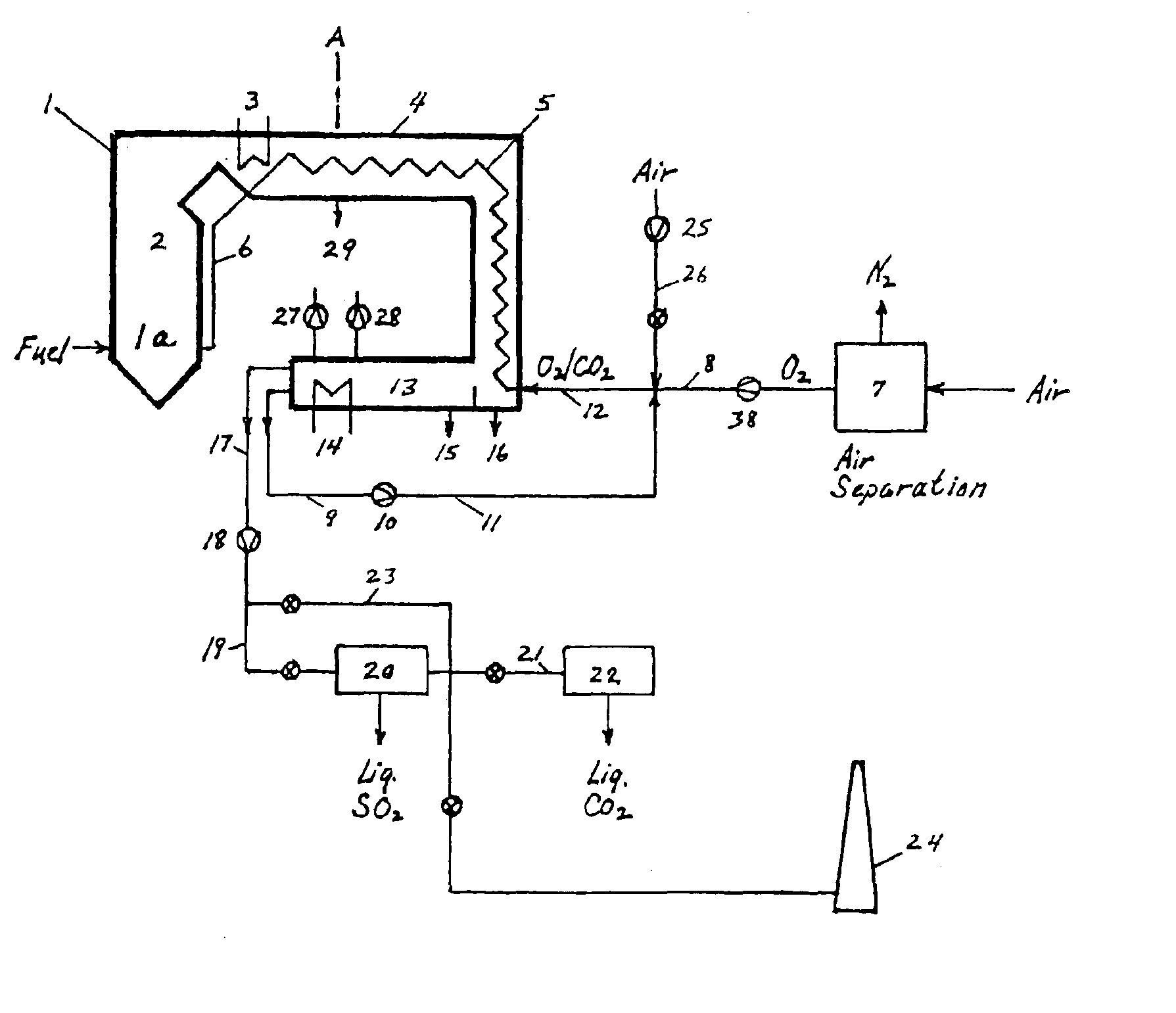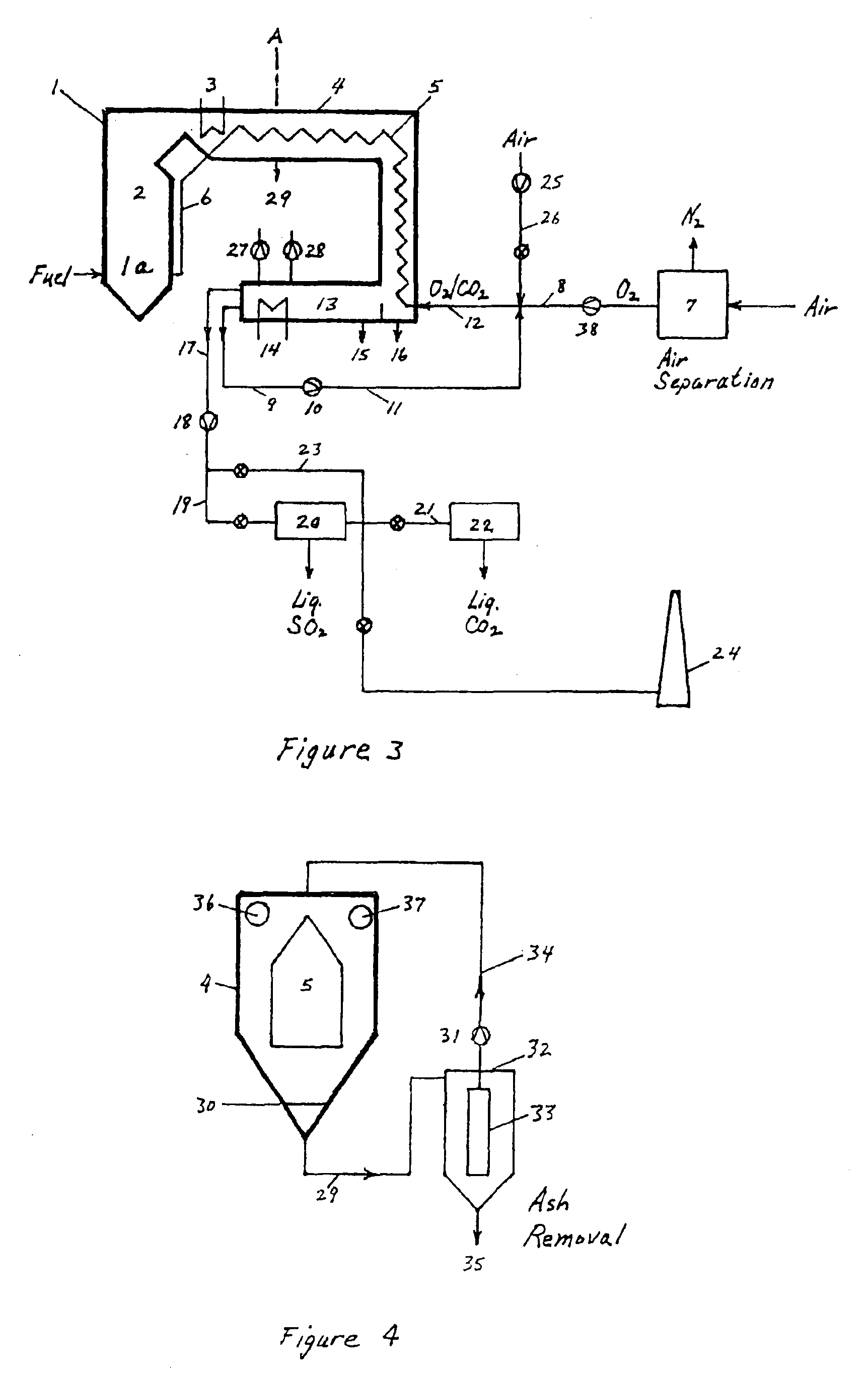Boiler improvements with oxygen-enriched combustion for increased efficiency and reduced emissions
- Summary
- Abstract
- Description
- Claims
- Application Information
AI Technical Summary
Benefits of technology
Problems solved by technology
Method used
Image
Examples
Embodiment Construction
[0064]FIG. 3 shows a cross-sectional schematic diagram of a steam-generating boiler 1 combined with a Gas Primer Sector (GPS) 4. Boiler 1 includes a fuel combustion zone 1a, radiation zone 2 and a convection zone in the area of the boiler feedwater tubing 3. Fuel is supplied to the boiler in the lower region of radiation zone 2, and the fuel oxidant is delivered through an insulated duct 6.
[0065]The overall dimensions of the GPS are generally proportional to boiler size. For example: given a 100 MW scale state-of-art boiler designed by Babock & Wilcox, its height may be about 125 feet (38 m); the GPS may extend horizontally about 125 feet (38 m) from the top of the boiler, then downwardly about 125 feet (38 m), and again horizontally about 75 feet (23 m) in a lower gas cooling section, as illustrated in FIG. 3. A similar boiler designed for a 750 MW capability may have a height of 250 feet (76 m); the GPS may extend horizontally about 250 feet (76 m) from the top of the boiler, then...
PUM
 Login to View More
Login to View More Abstract
Description
Claims
Application Information
 Login to View More
Login to View More - R&D
- Intellectual Property
- Life Sciences
- Materials
- Tech Scout
- Unparalleled Data Quality
- Higher Quality Content
- 60% Fewer Hallucinations
Browse by: Latest US Patents, China's latest patents, Technical Efficacy Thesaurus, Application Domain, Technology Topic, Popular Technical Reports.
© 2025 PatSnap. All rights reserved.Legal|Privacy policy|Modern Slavery Act Transparency Statement|Sitemap|About US| Contact US: help@patsnap.com



